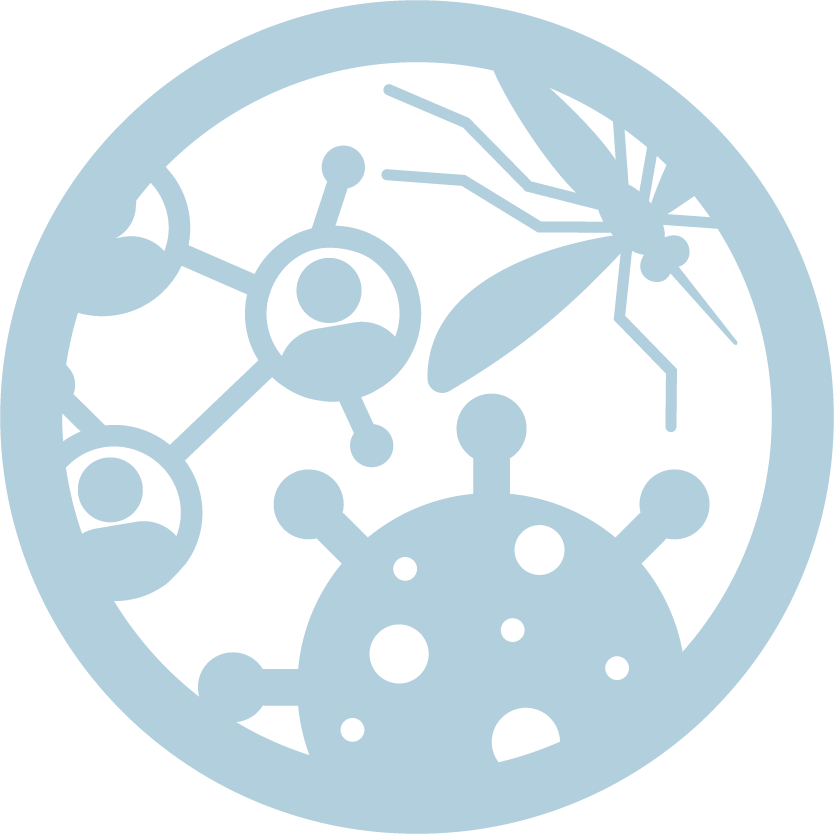What is varicella (Chickenpox)?
Varicella, also known as chickenpox, is a very contagious disease caused by the varicella-zoster virus (VZV). It causes a blister-like rash, itching, tiredness, and fever. After the primary infection of chickenpox, VZV stays in the body (in the sensory never ganglia) as a latent infection. The primary infection with VZV causes varicella. However, reactivation of latent infection causes herpes zoster, also known as shingles.
How do people get varicella?
The virus spreads easily from people with chickenpox to others who have never had the disease or received the chickenpox vaccine. The virus spreads in the air when an infected person coughs or sneezes. The disease can also spread by touching or breathing in the virus particles that come from chickenpox blisters.
What are the symptoms of varicella?
Chickenpox most commonly causes an illness that lasts about 5-10 days. The classic symptom of chickenpox is a rash that turns into itchy, fluid-filled blisters that eventually turn into scabs. The rash may spread all over the body, including inside the mouth, eyelids, and/or genital area.
Other symptoms
Other typical symptoms that may begin to appear 1-2 days before rash include:
– high fever
– tiredness
– loss of appetite
– headache
Children usually miss 5 to 6 days of school or childcare due to their chickenpox.
Symptoms in vaccinated person
Children who have been vaccinated against chickenpox can still get the disease. However, the symptoms are usually milder with fewer blisters and mild or no fever.
How is varicella diagnosed?
Before the development of the varicella vaccine, chickenpox was a common childhood disease in the United States. Therefore, health care providers could readily diagnose varicella by doing a clinical assessment. As a result, testing specimens and getting laboratory confirmation of VZV were not usually needed. However, clinical diagnosis is becoming more challenging because fewer people get varicella. Also, varicella in vaccinated people is often mild and atypical in presentation. Therefore, laboratory confirmation of varicella is becoming increasingly important in routine clinical practice.
What is the treatment for varicella?
There are several things that can be done at home to help relieve the symptoms and prevent skin infections. Calamine lotion and colloidal oatmeal baths may help relieve some of the itching. Keeping fingernails trimmed short may help prevent skin infections caused by scratching blisters.
Acyclovir Treatment
The American Academy of Pediatrics (AAP) recommends that certain groups at increased risk for moderate to severe varicella be considered for oral acyclovir treatment. These high risk groups include:
– healthy, persons older than 12 years of age
– persons with chronic cutaneous or pulmonary disorders
– persons receiving long-term salicylate therapy
– persons receiving short, intermittent, or aerosolized courses of corticosteroids
For maximum benefit, oral acyclovir therapy should be given within the first 24 hours after the varicella rash starts. Oral acyclovir therapy is not recommended by the Advisory Committee on Immunization Practices or AAP for use in otherwise healthy children experiencing typical varicella without complications.
What can be done to prevent the spread of varicella?
The best way to prevent chickenpox is to get the varicella vaccine. Children, adolescents, and adults should have two doses of the varicella vaccine. The varicella vaccine is very safe and effective at preventing the disease. Most people who get the vaccine will not get chickenpox. If a vaccinated person does get chickenpox, it is usually mild, with fewer blisters, and mild or no fever.

